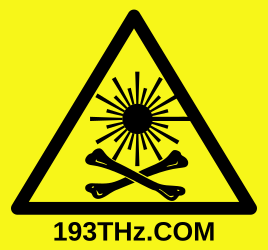
July 2023
Light at 1550nm is normally invisible to silicon sensors such as the camera inside a mobile phone. However, due to two-photon absorption, the sensitivity of the sensor grows with the intensity, and at high enough intensities, it becomes visible.
This effect is exploited to build simple autocorrelators for NIR pulsed lasers by splitting the beam in two and recombining them onto a silicon photodiode. Due to this nonlinear process, the photodiode only responds when the beams (pulses) temporally overlap. Scanning the path difference between the beams gives a measurement of the laser pulse duration. Such autocorrelators are essentially Michelson interferometers with a photodiode and voice coil mounted mirror. They are of course expensive, because anything that an ultrafast laser beam touches instantaneously becomes solid gold.
It is possible to observe this effect with a powerful laser beam generated with low-cost telecom components and a mobile phone camera. In this video, you can see that the laser light that otherwise produces no visible scatter or dot on the lens generates bright flashes when it goes straight into the sensor. The beam is produced with a Eudyna FLD5F15CX-H DFB emitting 1550nm at about 30mW, which is then amplified to almost 200mW by a low-cost Chinese EDFA (check Aliexpress or Taobao) and then collimated with a small lens from Shenzhen Box Optronics.
Quantitative measurements can be taken by directing the beam into a silicon photodiode (for example TEFD4300 glued into a SC/PC adapter with the zirconia guide removed) and ramping up the laser power (for example with a fiber-coupled manual VOA inserted into the output of the EDFA, and a 99:1 FBT splitter to measure the current power). The nonlinear response becomes evident.
Note that such a beam is capable of burning things like black paper or plastic, and this experiment may damage your camera! Do this only with a camera that you do not care about, for example from an old discarded phone. Obviously, suitable laser safety goggles are a must every time the EDFA is on. Collimating the beam makes it more dangerous than it normally is.